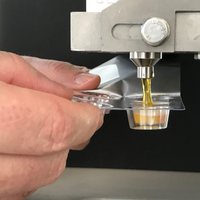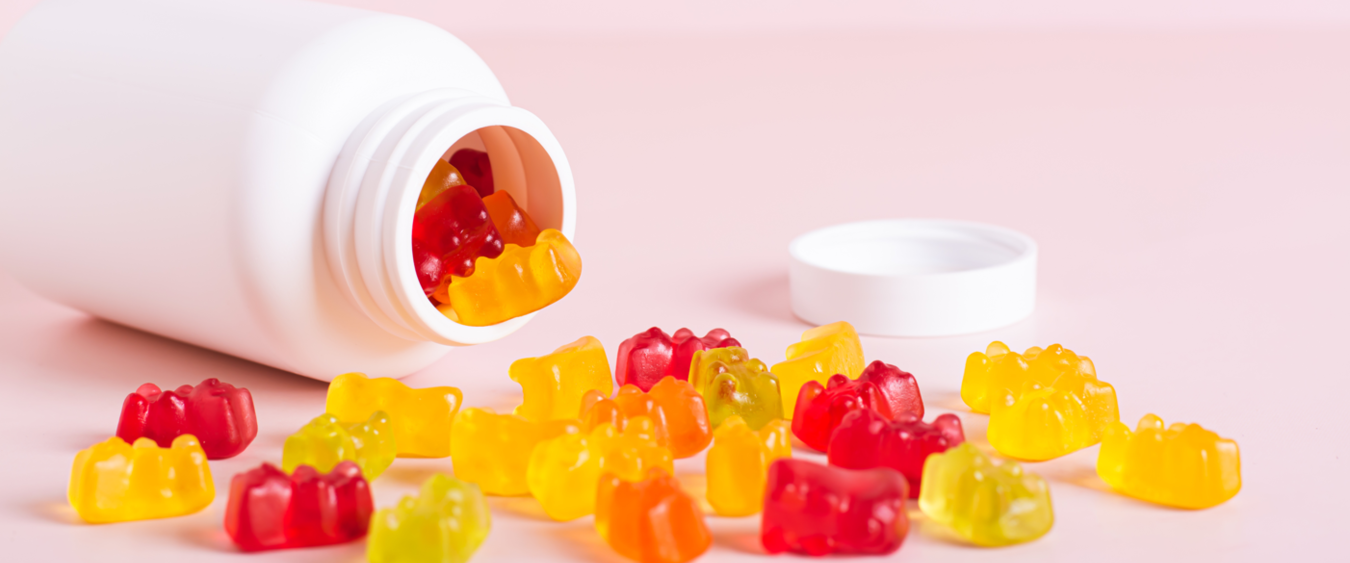How SiMoGel™ is changing the game in functional gummies
Functional gummies have emerged as a leading trend in dietary supplements globally, with rapid growth across Europe, North America and Asia. We spoke with Pierre Albert Thomas, Global Director Rousselot Functional Ingredients, about the history and popularity of functional gummies, conventional production challenges, and how, with gelatin solutions like SiMoGel™, Rousselot’s R&D is opening up exciting opportunities.
What are functional gummies?

Functional gummies are those chewy, tasty sweets that come in bright colors and cute shapes, and are sold in jars, pots and bottles across retail, drugstores and health food markets. The difference between functional gummies and traditional gummy-based sweets is that the functional variety are enriched with health-related ingredients, from vitamins, minerals and fibers to collagen or pre- and probiotics. The delivery format is marketed by pharmaceutical and nutraceutical brands worldwide under different product names, including fortified or enriched gummies, health gummies, supplement gummies, cannabidiol (CBD) or vitamin gummies.
Where did functional gummies originate?
The market for functional gummies is booming – a surge preceded by a long history. The origins of gummies can be traced back to the 18th century, when apothecaries started prescribing sugared herbal remedies in the form of candies as a convenient format to treat disorders like digestion problems. In the mid-19th century, American pharmacist Oliver Chase invented the first machine to create medicated candy lozenges using gum Arabic, peppermint and brown sugar – and changing the industry forever. Functional gummies as we know them today were first commercialized in the United States in the 1990s, when advancements in food technology and formulation allowed brands to add nutrients to a wide range of food matrices. Initially, children were the main consumers of these mineral- and vitamin-enriched gummy bears, with other demographics joining since.
How is the market for functional gummies developing today?

In recent years, the delivery format has seen unprecedented growth among all ages. The global market is projected to achieve a compound annual growth rate (CAGR) of 13.4% from 2023 to 20331. ‘Functional gummies are one of the fastest-growing trends in dietary supplements across Europe‘, says Pierre Albert Thomas, Global Director of Rousselot Functional Ingredients. ‘In 2021, gummies saw a massive 74.9% boom in sales, becoming the largest non-pill format with an impressive 21.3% market share2.’ He adds that at last May’s Vitafoods Europe 2023, the nutraceutical trade fair in Geneva, ‘gummy innovation took center stage, as many ingredient manufacturers chose this delivery format for their sample products.’
Why are functional gummies so popular?
The interest of consumers and brands in gummy supplements is easy to understand. Unlike pills or capsules, gummies look great, coming in many shapes, sizes and colors. With unlimited flavor possibilities, they can also mask unpleasant off-tastes. And, perhaps most importantly, they are easy to chew and swallow. ‘For consumers, gummies can make getting your recommended daily dose of vitamins and supplements a fun experience,’ says Pierre Albert. ‘And for manufacturers, correct formulation enables you to include and combine a broad variety of active ingredients, while delivering excellent shelf-life stability.’

How can manufacturers overcome traditional challenges in gummy production?
In traditional manufacturing settings, the journey from functional gummy concept to final product is no easy one. ‘Functional gummy manufacturing has typically been a sticky business with numerous risks and challenges,’ explains Pierre Albert. ‘These still exist, but formulation advances and the discovery of new technologies are changing the game.’ A major game changer in functional gummies is SiMoGel™. This is a patented technology developed by the teams of Rousselot’s Global Application Center, and enabling nutraceutical players to turn all the challenges listed below into opportunities.

- Getting the texture just right
Texture is a critical factor in this segment: a gummy that does not have that perfect chewiness – which means it’s either too tough or too squishy – will not sell. ‘The choice of gelling agent plays a pivotal role in texture,’ explains Pierre Albert. ‘Gelatin, a traditional choice bringing superior mouthfeel and transparency, has been used for over a century. With new gelatin formulation technologies like SiMoGel™, we are reaching further, allowing producers to offer innovative products that boast the unique elasticity and long bite of gelatin gummies.’

- Overcoming cross-contamination
Another risk producers have often faced is related to the starch-molding method traditionally used in gummy production. ‘With starch-molding, the hot gummy mass is usually deposited into imprints left in starch molds, allowed to cure, and then removed, at which point the starch is recycled for the next batch. Adding active ingredients into this process creates the risk of cross-contamination, as the starch is reused between product runs. With SiMoGel™, the manufacturer can deposit the mass directly into silicone or metal molds, or even blister packs, avoiding this risk.’
- Improving production efficiency
The amount of time gelatin needs to set is another challenge – and a critical factor in ensuring nutraceutical production lines run as smoothly and cost-effectively as possible. In this area, SiMoGel™ has broken all the records, says Pierre Albert. ‘It has a ground-breaking gelation speed of 15 to 20 minutes setting time, as opposed to the 24 hours usually required. As a gelatin-based solution, it significantly optimizes not only hygiene, but also efficiency and flexibility.’

- Wowing consumers with novel dosage forms
nnovative gelatin-based formulations also enable the design of novel dosage forms. Liquid-filled 'gummy caps' are a prime example. Made possible with SiMoGel™ and developed by Rousselot , this delivery format is positioned at the intersection of gummy and softgel. It contains the active principle ingredient (API) within a liquid center, reducing the risk of interaction with the gelatin excipient and allowing for more accurate delivery. Gummy caps combine the appealing taste and texture of a gummy with the efficient delivery of a capsule and can be used in a wide range of nutraceutical and over-the-counter (OTC) healthcare products.
- Using active ingredients more effectively and efficiently
The efficiency of gummy caps is truly groundbreaking, Pierre Albert continues. ‘The heat needed to create gelatin gummies has often put the stability of active ingredients at risk. To counter this, nutraceutical manufacturers in the past often used excessive amounts of vitamins or supplements, for example, when the API was added to hot syrup to offset heat degradation. With gummy caps, we carry the API in a liquid or gel. This maximizes the use of expensive ingredients: an 80mg Vitamin C gummy cap requires 30% less Vitamin C than a traditional functional gummy. The lower temperature requirements needed for gummy cap production help maintain API stability and prevent the degradation of nutrients. Gummy caps also offer freedom to use more types of nutraceutical and active ingredients, such as probiotics known for their sensitivity to heat. They also allow for a higher nutrient content compared to traditional nutraceutical gummies: a multi-vitamin gummy cap made with this technology meets the Recommended Daily Intake (RDI) of 10 vitamins in only one gummy: with regular nutraceutical gummies, you would need three to achieve the same nutrient content.’

- Cleaner, clearer labeling
Unlike some plant-based alternatives, gelatin used in gummies avoids e-numbers, contributing to cleaner labels. ‘Consumers increasingly want clean and natural ingredients. Gelatin, a pure protein derived from collagen, offers a natural and sustainable solution, meeting the demand for clean label positioning.’
- Reducing sugar content
Today’s health-conscious consumers are wary of sugar, which means adding sugars and fructose syrups is no longer the best way to satisfying their desire for sweet-tasting gummies. ‘Delivering the same sensory enjoyment consumers get from a traditional sugar-sweetened gummy, but with less or zero sugar, is challenging,’ says Pierre Albert. ‘Gelatin provides exciting answers to this question, thanks to its high compatibility with a wide range of ingredients and sweetening agents.’
Are there other success factors in functional gummy production?
Nutraceutical gummies will continue to be a crowd pleaser in 2024 and beyond, offering consumers of all ages and walks of life a versatile and enjoyable way to take supplements. So how does a manufacturer stand out in this exciting, but crowded market? Pierre Albert: ‘Gelatin remains the gold standard material for gummy innovation, but creating the perfect gelatin formulation can still be a challenge. In my view, brands need a reliable ingredients partner with extensive experience to help them overcome production obstacles, get their products to market faster and succeed in the growing gummy space. That’s why at Rousselot we not only invest heavily in R&D, but also in collaboration with, and technical support for, our customers. Even in this growing market, we see a lot of potential for further improvement of products and processes.’
Read Pierre Albert Thomas’ story
Find out more about SiMoGel™, gummy caps
Or visit our Functional Ingredients pages
